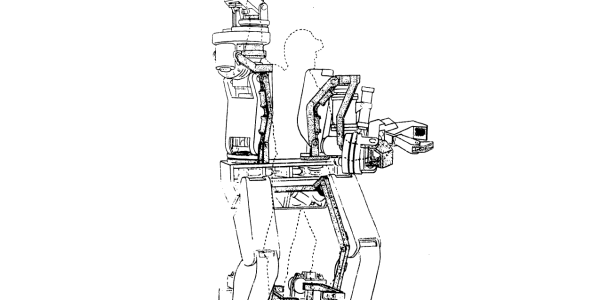Robotics and electronics are huge industries, and the growth in those fields results in improvements in technology and other innovations. Sensor, battery, and power supply technologies are all rapidly improving. As these technologies improve, it becomes easier and more affordable to make useful and practical exoskeletons.
Early exoskeletons
The first exoskeleton was called the Hardiman-1, and was slightly absurd. It used a combination of electrohydraulic and hydromechanical servo motors, and allowed the wearer to lift 750 pounds. However, the suit itself weighed 1,500 pounds and moved at a speed of 1.7 miles per hour, a blistering pace for a garden snail, but infuriatingly slow for a human. This heavy and cumbersome exoskeleton was deemed impractical, and was therefore short-lived.
Current exoskeletons
Modern exoskeletons are nothing like General Electric’s Hardiman-1 from half a century ago. They are lightweight, responsive, and practical. Everything involved in creating an exoskeleton – the materials, the sensors, the power supply, etc. – have drastically improved since the 1960s. The sensors are responsive, the materials lightweight, and power supplies are long lasting and portable.
Lightweight exoskeletons could benefit many professions. They could be worn by freight dock workers and by EMTS. Exoskeletons could be worn by bakers who have to lift heavy sacks of flour, or even by consumers who are moving furniture or doing yard work. Exoskeletons could be useful at work, but also useful around the house.
Exoskeletons are already being used by physical trainers to help patients with recovery, and by the military to enhance soldiers’ capabilities. They’re becoming more affordable, practical, and common. It may only be a matter of time before exoskeletons can be found in homes.
There was a time when computers were big, expensive, and absurd, but now we walk around with computers in our pockets. When the first computers were developed, few would have though they would become as commonplace as they are today. The same could be true for exoskeletons.
